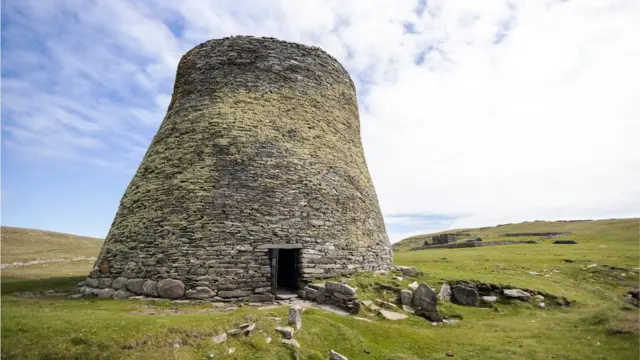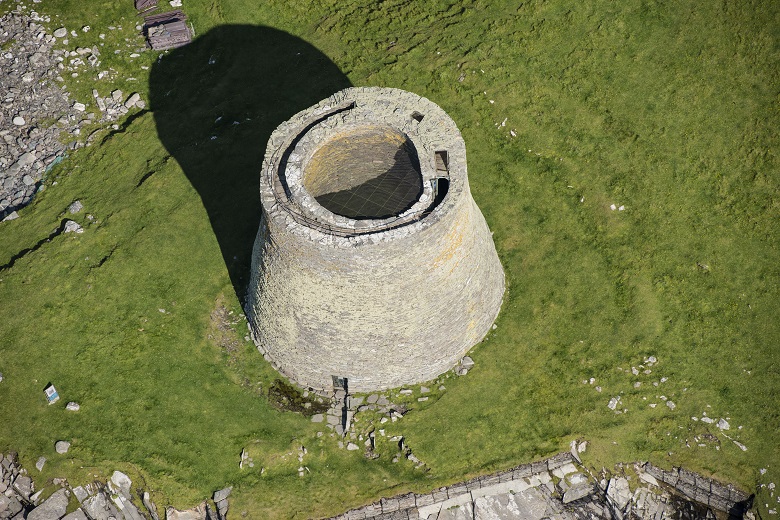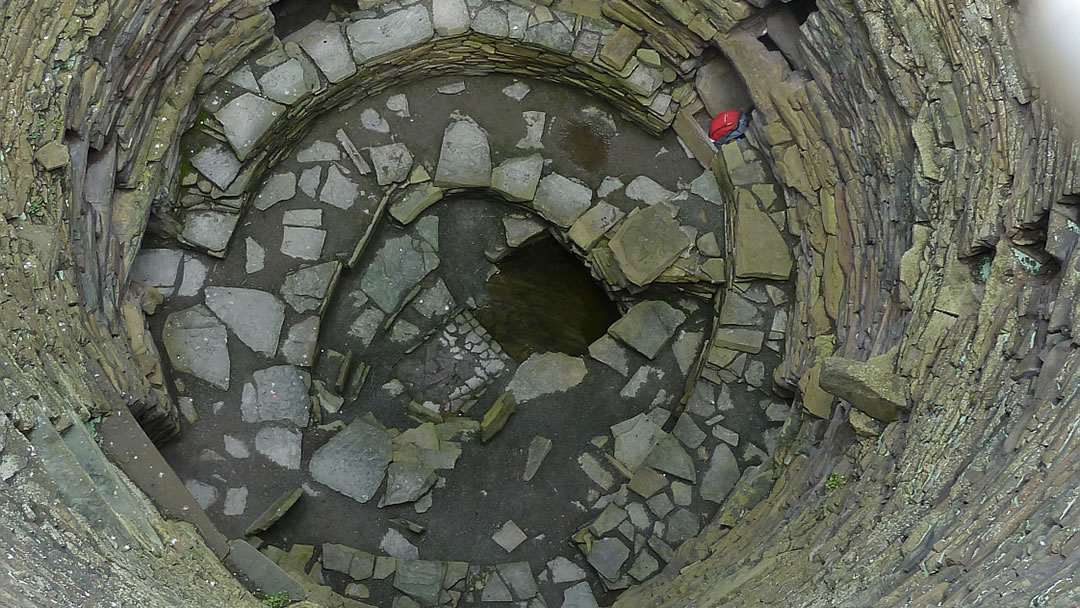The Mousa Broch stands as one of the most remarkable and well-preserved examples of Iron Age architecture in Scotland. Located on the remote island of Mousa in the Shetland archipelago, this ancient structure, built around 300 BC, rises to an impressive 43 feet, making it one of the tallest brochs in existence. With thick, double-layered stone walls that were skillfully constructed without mortar, the broch exemplifies the ingenuity of Iron Age builders. Historians believe the broch may have served as both a defensive stronghold and a residence for high-status individuals, offering unique insight into Scotland’s Iron Age communities.

Design and Defensive Features
Strategically perched along the coast, Mousa Broch was ideally located for defense, especially against seaborne invaders. The broch’s base features walls as thick as 15 feet, with small chambers embedded within that could have been used for storage or lookout purposes. Inside, the broch includes a central hearth for warmth and cooking, underscoring its role as a livable space. The spiral staircase, winding through the walls, provided access to different levels, allowing inhabitants to monitor their surroundings and likely communicate with other settlements or signal through fires.

The broch’s coastal positioning may have also had a communicative function. Signal fires lit at the top of Mousa Broch would have been visible over long distances, serving as warnings or messages for other communities along the coast. This ability to send signals demonstrates the strategic placement of the broch in both defensive and social contexts.
Legendary References in Norse Sagas
Mousa Broch’s significance extends beyond its physical structure; it also holds a prominent place in Norse mythology. It is mentioned in the Orkneyinga Saga, a Norse saga that recounts Viking history and tales in Scotland. According to the saga, a Norwegian couple sought refuge within the broch’s walls after being shipwrecked in AD 900, illustrating the structure’s continued use and resilience even centuries after its construction. This story captures the imagination, showing the broch as both a historical artifact and a symbol of endurance and shelter.

An Iron Age Wonder
Today, Mousa Broch remains an invaluable piece of Scotland’s Iron Age history. Recognized as a site of national importance by Historic Environment Scotland, the broch has attracted archaeologists, historians, and countless visitors intrigued by its well-preserved condition and architectural ingenuity. The broch endures as a symbol of the resilience and craftsmanship of ancient Scottish societies and stands as a powerful reminder of Scotland’s rich cultural heritage.

Legacy and Cultural Significance
Mousa Broch’s preservation speaks to the remarkable skill of Iron Age builders and their ability to create structures that could withstand the forces of nature and time. The broch continues to connect modern visitors to the distant past, providing a tangible link to the lives, beliefs, and challenges of Scotland’s ancient communities. As one of the tallest and best-preserved brochs, Mousa Broch not only embodies Scotland’s architectural heritage but also serves as a source of national pride and cultural fascination.

